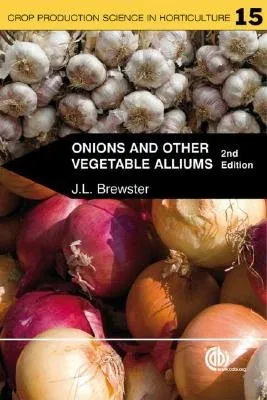J Brewster
(Author)Onions and Other Vegetable AlliumsPaperback, 1 July 2008

Qty
1
Turbo
Ships in 2 - 3 days
Only 5 left
Free Delivery
Cash on Delivery
15 Days
Free Returns
Secure Checkout

Part of Series
Crop Production Science in Horticulture
Part of Series
Agriculture
Print Length
448 pages
Language
English
Publisher
Cabi
Date Published
1 Jul 2008
ISBN-10
1845933990
ISBN-13
9781845933999
Description
Product Details
Author:
Book Format:
Paperback
Country of Origin:
GB
Date Published:
1 July 2008
Dimensions:
22.86 x
15.49 x
2.03 cm
ISBN-10:
1845933990
ISBN-13:
9781845933999
Language:
English
Location:
Cambridge, MA
Pages:
448
Publisher:
Weight:
839.15 gm